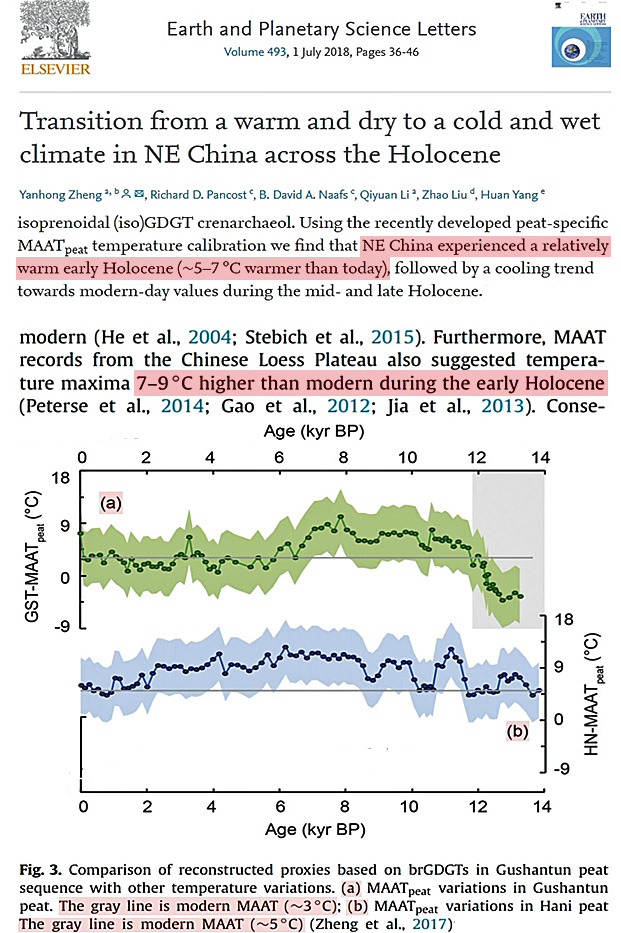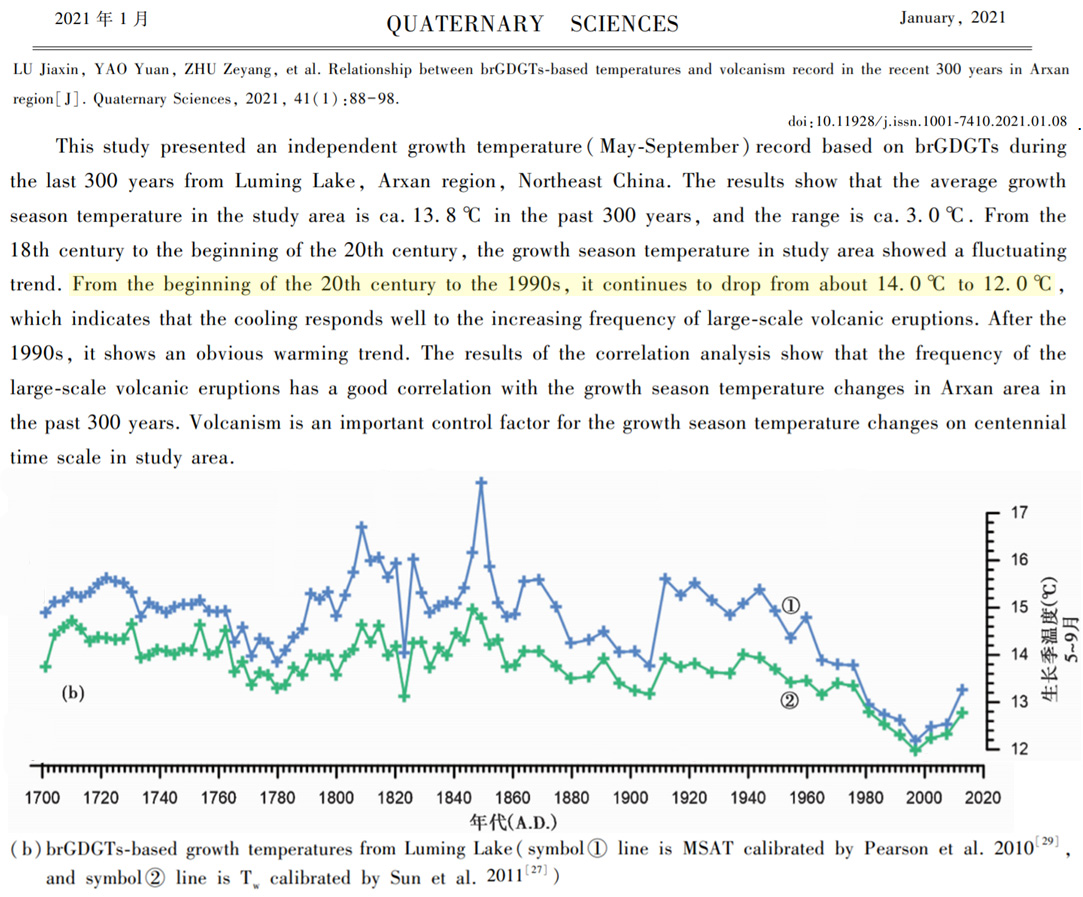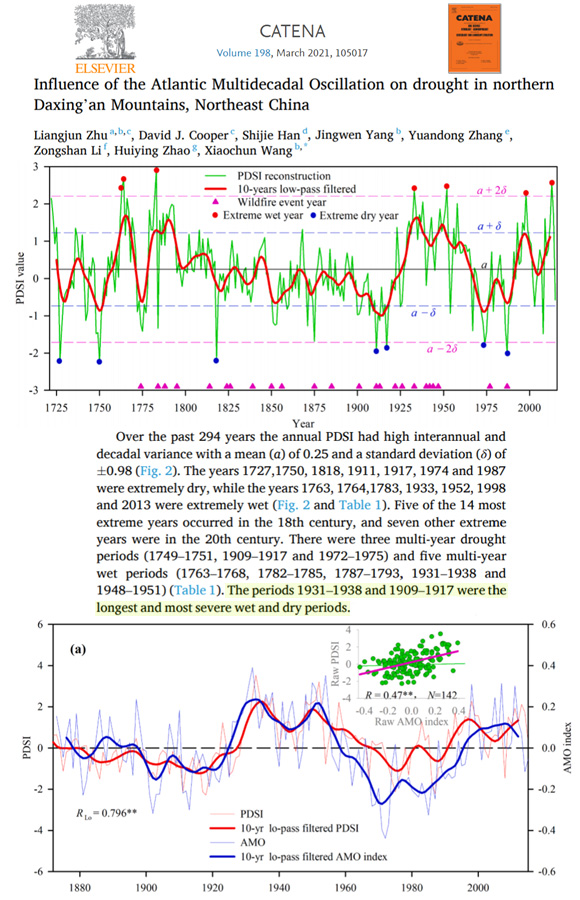Northeast China has not been cooperating with the anthropogenic global warming narrative.
A few years ago NE China was shown to be up to 7-9°C warmer than present during the Early Holocene (Zheng et al., 2018), when CO2 concentrations drifted around 260 ppm.

Image Source: Zheng et al., 2018
Now two new studies indicate this region has cooled by 2-3°C since the mid-1800s (Lu et al., 2021), with more extensive drought conditions in the 1930s than in recent decades and no overall precipitation trend since the 1700s (Zhu et al., 2021).
“This study presented an independent growth temperature(May-September) record based on brGDGTs during the last 300 years from Luming Lake, Arxan region, Northeast China. The results show that the average growth season temperature in the study area is ca. 13.8 ℃ in the past 300 years, and the range is ca. 3.0 ℃. From the 18th century to the beginning of the 20th century, the growth season temperature in study area showed a fluctuating trend. From the beginning of the 20th century to the 1990s, it continues to drop from about 14.0 ℃ to 12.0 ℃, which indicates that the cooling responds well to the increasing frequency of large-scale volcanic eruptions. After the 1990s, it shows an obvious warming trend. The results of the correlation analysis show that the frequency of the large-scale volcanic eruptions has a good correlation with the growth season temperature changes in Arxan area in the past 300 years. Volcanism is an important control factor for the growth season temperature changes on centennial time scale in study area.”

Image Source: Lu et al., 2021
“Our results provide new evidence for understanding the multiple spatial patterns of drought caused by the AMO. More studies in other territories with similar climate conditions are needed to test the linkage between drought and AMO. In addition, the AMO was significantly correlated with temperature rather than drought in many regions of China (Wang et al., 2013b; Li et al., 2015b), such as the Qinghai-Tibet Plateau in southwest China (Fang et al., 2019; Shi et al., 2017) and the Xiaoxing’an (Zhu et al., 2015) and Changbai mountain (Zhu et al., 2017) of northeast China. Climate dynamics analysis on a global scale will help reveal AMO’s driving mechanism on the local climate and outline the spatial boundaries of AMO’s impact on temperature and drought.”
“We found a significant El Nino-Southern Oscillation or weak Pacific decadal oscillation signal in our drought reconstruction. Spectral analysis, for significant high-frequency El Nino-Southern Oscillation cycles or weak 16-year Pacific decadal oscillation signal, and spatial correlations such as a strong correlation with the Pacific SSTs, revealed a possible linkage between the Pacific-related Oscillations and drought in the northern DM. Previous studies in central DM and east MP have confirmed that the Pacific oscillation is an important driving force of drought in northeast China (Lv, 2012; Zhu et al., 2018), just as it is in North America (Oglesby et al., 2012).”

Image Source: Zhu et al., 2021
via NoTricksZone
March 8, 2021 at 09:19AM
